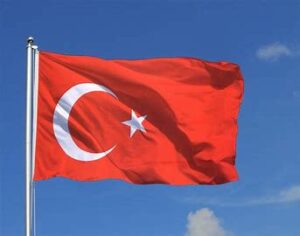UTPR, Generally
The Under-Taxed Payments Rule (UTPR) operates as a backstop to the Income Inclusion Rule (IIR) so that if not all top-up tax is allocated under an IIR (or for instance if there was no IIR in the relevant jurisdiction), the liability to account for the top-up tax falls on the jurisdiction where the constituent entities are located. For more information on the IIR, see Income Inclusion Rule.
This is the direct opposite of the IIR which requires the jurisdictions of parent entities to account for the tax.
Note that, the Administrative Guidance issued on July 17, 2023 included a new safe harbour which deems the UTPR Top-up Tax amount for a UPE Jurisdiction to be zero if the UPE Jurisdiction has a corporate income tax rate of at least 20 percent.
This applies for Fiscal Years which begin on or before 31 December 2025 and end before 31 December 2026. For more information, see Pillar Two: Transitional UTPR Safe Harbour.
Under Article 2.4.2 of the OECD Model Rules, the method of accounting for tax under the UTPR can be either:
– The denial of a deduction; or
– Other equivalent adjustments.
Denial of a deduction is pretty straightforward. It means that for domestic tax purposes the low-taxed constituent entity would be denied a tax deduction so that the extra amount of tax payable equates to the allocated top-up tax.
For instance, if the domestic tax rate is 10% and the top-up tax allocated to the low-taxed entity under the UTPR is 100,000 euros, a tax deduction would be denied for an expense of 1 million euros. This would then increase taxable income by 1 million euros and result in additional tax payable of 100,000 euros.
Another option would be for individual jurisdictions to account for top-up tax under the UTPR by making another equivalent adjustment. The nature of this adjustment is left to domestic jurisdictions, but the two main options are either a separate tax on the low-taxed entity or a deemed increase in taxable income.
Whichever method is used the adjustment needs to result in an ‘additional cash expense’ equal to the amount of top-up tax allocated to the jurisdiction. This simply means the adjustment should give rise to extra tax payable, over and above the usual corporate income tax, for the relevant amount.
Note that the UTPR adjustment needs to give rise to additional tax payable in the current year. Therefore, a restriction on tax losses being carried forward wouldn’t be a satisfactory UTPR adjustment.
The UTPR just requires the jurisdiction to apply a UTPR adjustment to account for the amount of top-up tax allocated to that jurisdiction. A separate issue is then how is this allocated amongst the low-taxed entities in that jurisdiction. The OECD leaves that to individual jurisdictions.
In general, Article 2.4.2 of the OECD Model Rules provides that the UTPR adjustment needs to be made in the tax year in which the tax year ends. This may, however, not always be possible. For instance, if a jurisdiction applied a UTPR adjustment via a denial of a deduction, a low-taxed entity that did not have substantial deductions may not be able to add back sufficient deductions to account for the full amount of allocated top-up tax.
A carry-forward mechanism applies to carry forward any excess UTPR top-up tax not properly collected in the current tax year to future tax years until fully accounted for.
Note that in this case, even if the MNE group fell outside the scope of the Pillar Two GloBE rules in future years (eg due to not meeting the 750 million euros threshold requirement), any brought forward UTPR would still need to be accounted for.
The requirement to calculate an additional cash tax expense under the UTPR rules can have a significant impact on the income tax position of an entity allocated top-up tax in a UTPR jurisdiction, particularly where it eliminates a tax loss carry-forward.
Additional Tax Expense – Example
Assume Company 1 is the sole constituent entity located in a UTPR jurisdiction.
It has a tax loss of 10,000,000 euros in year 1 and a profit of 10,000,000 euros in year 2.
Tax losses can be carried forward in this jurisdiction.
The jurisdiction is allocated UTPR top-up tax of 5,000,000 euros in year 1. The CIT rate in the UTPR jurisdiction is 20%. The UTPR jurisdiction implements the UTPR via a denial of a deduction.
In order to create an additional tax expense of 5,000,000 euros it denies a deduction for 25,000,000 of expenses (ie 25 million x 20% CIT = 5 million UTPR adjustment).
This eliminates the loss in year 1 and creates taxable profits of 15,000,0000 euros.
Company 1 would pay CIT of 3,000,000 euros on this. This is the UTPR additional cash tax expense. However, there is still an additional 2,000,000 additional cash tax expense to be collected.
In year 2, as the tax loss in year 1 has been eliminated, CIT is paid of 2,000,000 euros on the 10,000,000 euros profit, which is the remaining additional cash tax expense for the UTPR adjustment.
If losses were not permitted to be carried forward in the UTPR jurisdiction, the position in year 2 would be different.
In year 1 there would still be the additional tax expense of 3,000,000 euros paid, however, although CIT of 2,000,000 euros is paid in year 2 this is not an additional tax expense as it would have been payable anyway given the tax losses would not have been carried forward.
Therefore, the UTPR would need to deny an additional deduction of 10,000,000 to increase taxable profits to 20,000,000 so that the CIT payable was increased by 2,000,000 euros.
This would then collect the remaining UTPR top-up tax allocated and represents the remaining additional cash tax expense. If there were insufficient deductions available, there would be a carry-forward.












